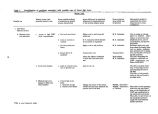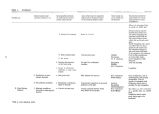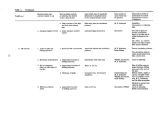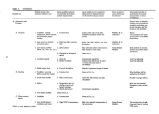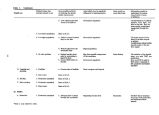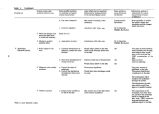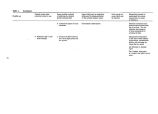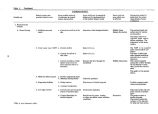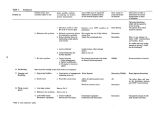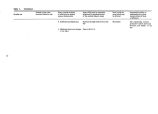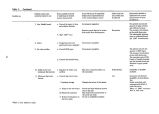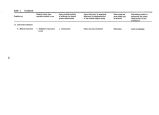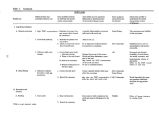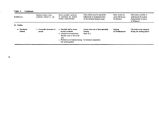| OCR Text |
Show The research needs listed in Table 15 for the water quality aspects of the system deal mainly with identifying the present water quality characteristics of the bay. This is an important research need for Farmington Bay and should involve at least a year of monitoring the inflow and distribution of the important water quality parameters. Sampling for a minimum of a year is required to properly describe the seasonal variation in the water quality parameters. The water quality parameters listed in the table are tentative. The results of the water quality sampling of the bay for the Weber River 208 study should reveal further water quality parameters which are important to monitor in an extended sampling program. When this is coupled with research on the social uses to identify the system characteristics favorable for specific uses the result may require the initiation of further research. The logical sequence of research after the identification of the characteristics of the present physical system, the possible social uses of the bay, and the physical characteristics of the system desired for each possible use that have been identified are outlined in the next section. Research Needs and Priorities in the Comprehensive Plan Development The development of a comprehensive plan for a complex system such as Great Salt Lake involves an iterative process between the decision- maker and research on the physical and social use systems. Through this iterative process a multitude of potential use combinations are narrowed down to a single flexible plan. The final plan is arrived at by eliminating infeasible uses and selecting a mix of the feasible uses which will maximize the benefits to society from the limited resources of the system. Flexibility is required for the final plan because changing lake conditions in the future and shifts in use patterns may create the need to reexamine and perhaps alter the comprehensive plan. For example, methods to alleviate high water damage were not a consideration in 1963 when the lake was at an all time low. Farmington Bay will be used as an example in the following pages to provide insight into the development of a comprehensive plan for a real system. The discussion should in no way be viewed as a recommended management plan for the bay since it involves many assumptions about the characteristics of the physical system. Alternative plans for using the resources of the system create the need for research on both the physical system and social uses of the system. Research must be conducted to establish the public's desire for proposed uses, the feasibility of the system to support the uses, and the impacts on other uses if alteration of the physical system is required to facilitate a particular social use. The first step in the planning process is to identify the potential uses of the system. This constitutes the initial step in developing alternative management Table 15. Research needs identified for the water quality aspects of Farmington Bay. Research Needs Possible Information Source Group A Assess the extent and spatial variation of the current water quality problems by sampling the water and bottom sediment. The following water quality parameters definately should be included: Biochemical oxygen demand, dissolved oxygen, chemical oxygen demand, temperature, pH, the major nutrients, heavy metals, pesticides, herbicides, and pathogenic organisms. The present inflow of the above water quality parameters especially from the Jordan River. Identify the aerobic and anaerobic decay rates for the bay at various salinity levels. Future salinity trends of the bay. The relationship between algae growth and nutrient supply in the bay. The relationship between the water quality of the bay and the lake and how the bay could be managed to protect the water quality of the lake. Group B The feasibility of using biological methods such as the harvest of carp or catfish to remove organic material from the bay. The effects of power boating on the water quality of the bay. The effects of the introduction of carp on the water quality of the bay. Weber 208 Study, DH, UGMS DH, USGS, EPA DH, UWRL DWR, UWRL UWRL UWRL DWLR, FWS DPR, UWRL, UDOT DWLR, FWS 52 |


















